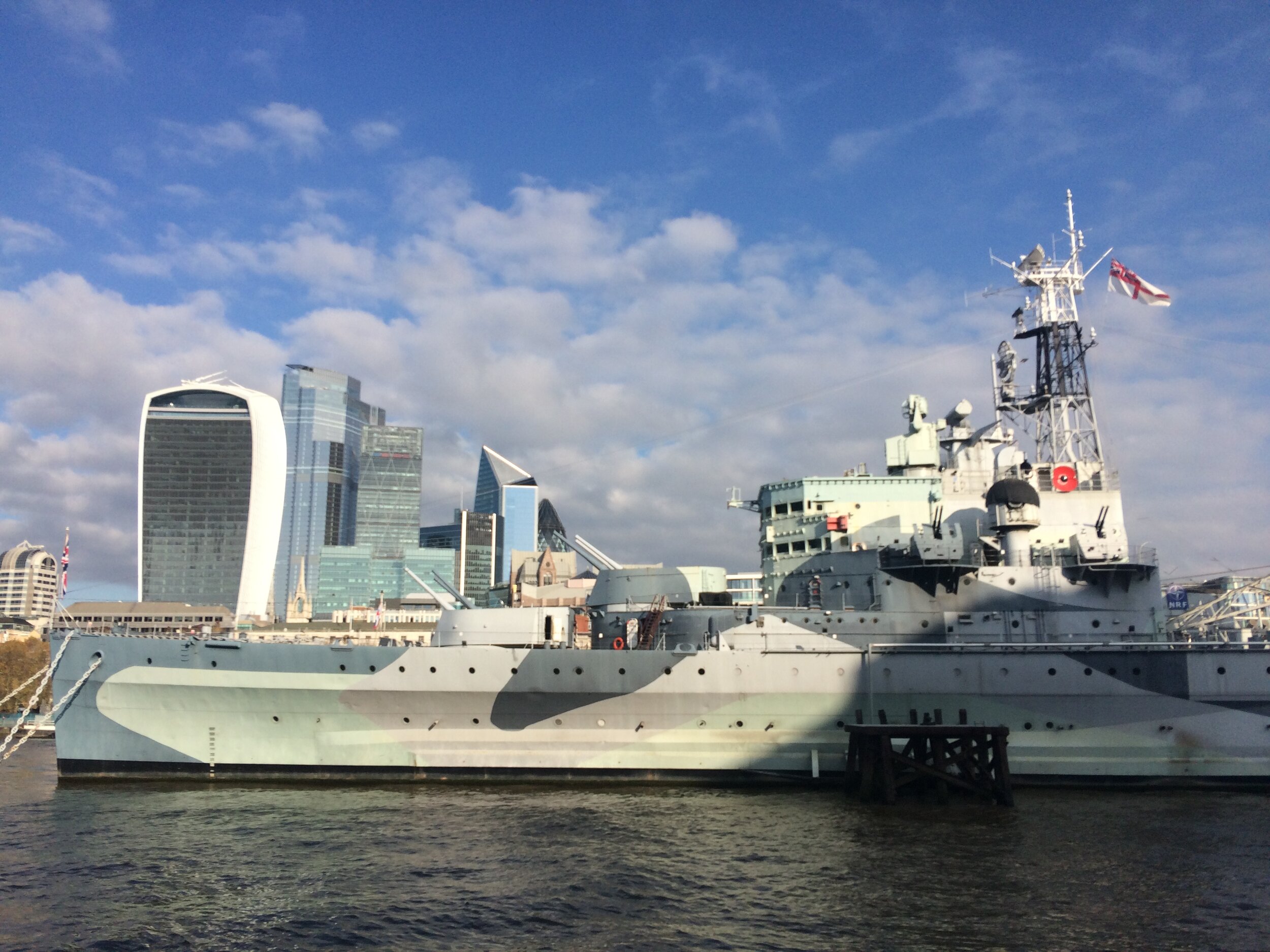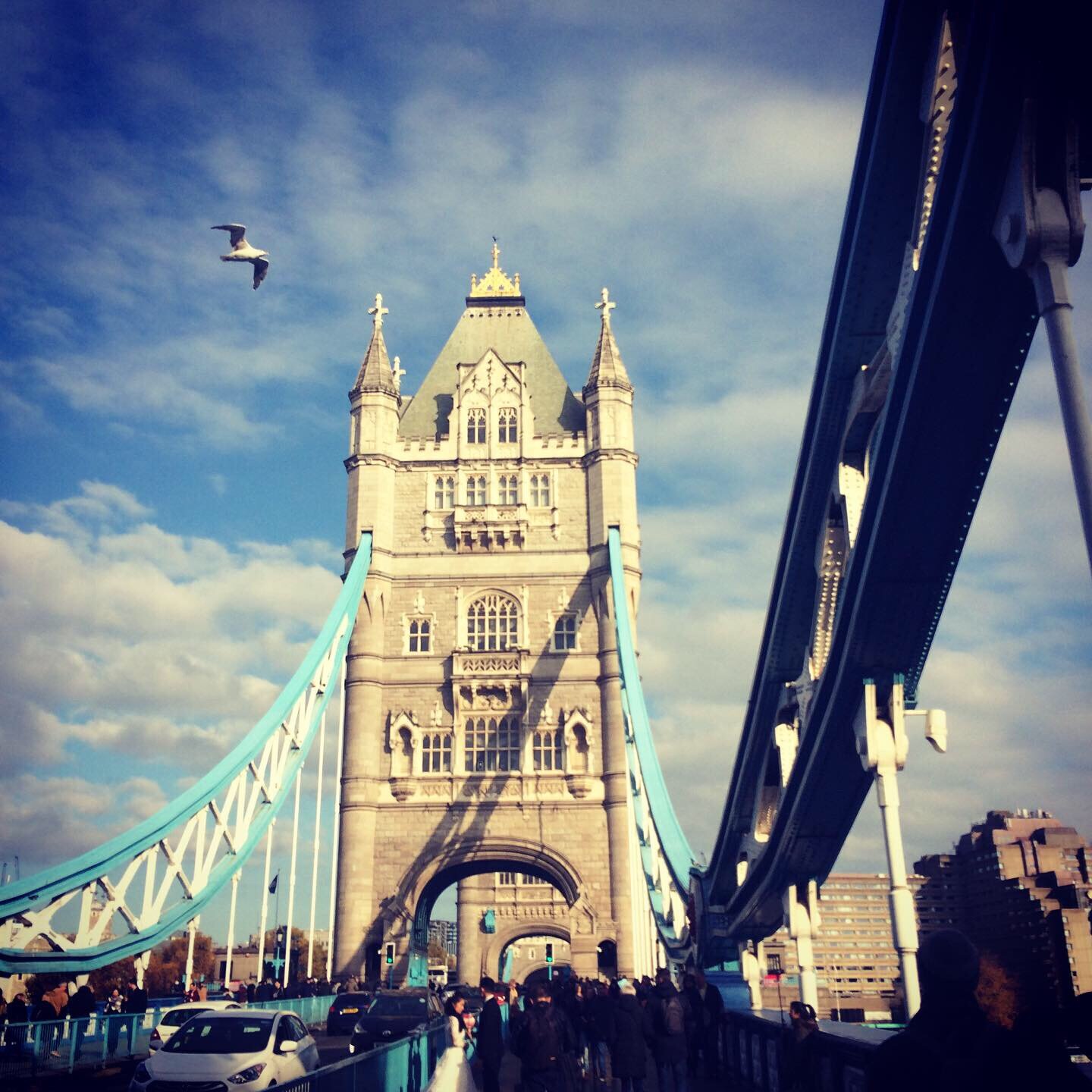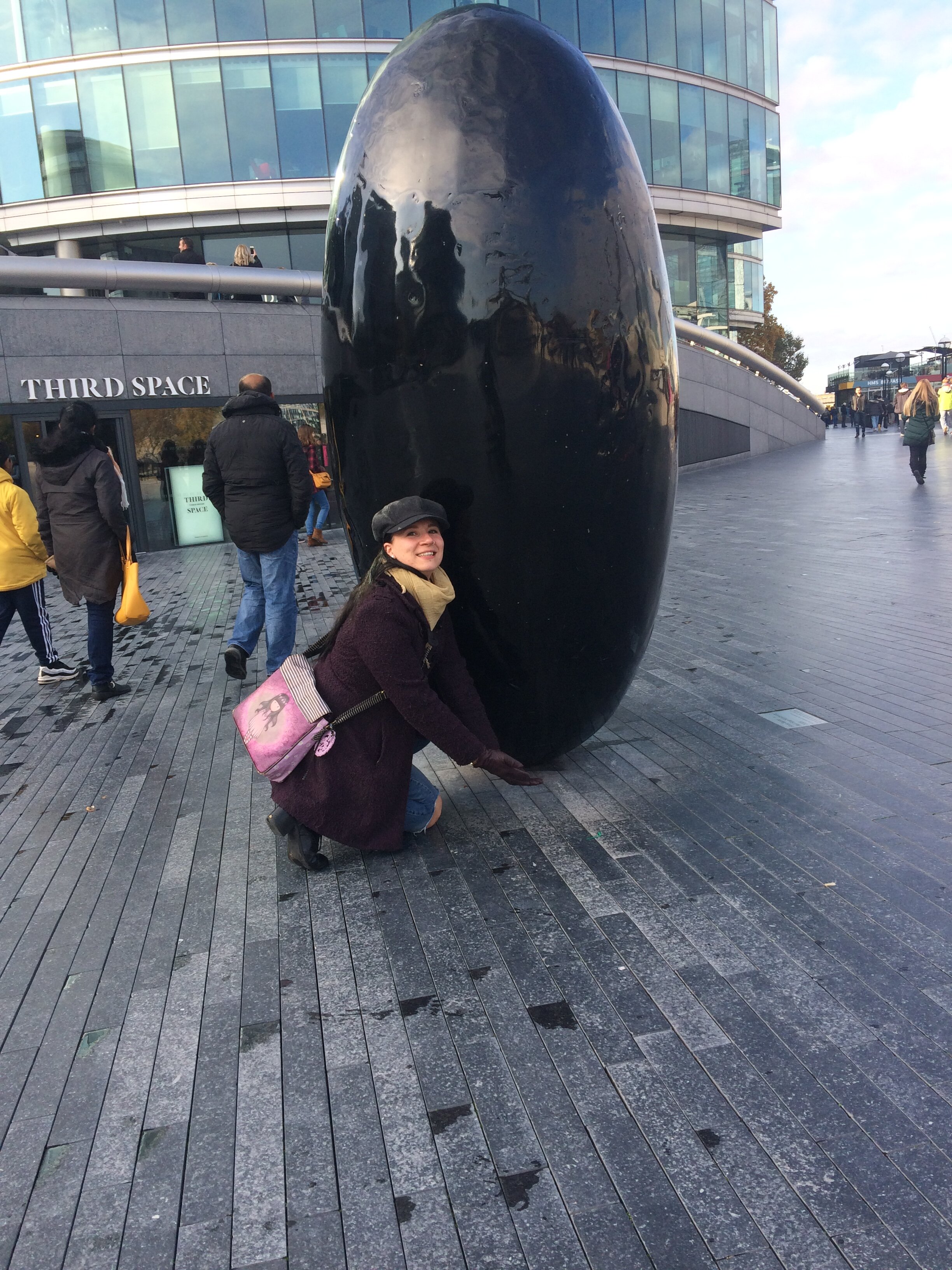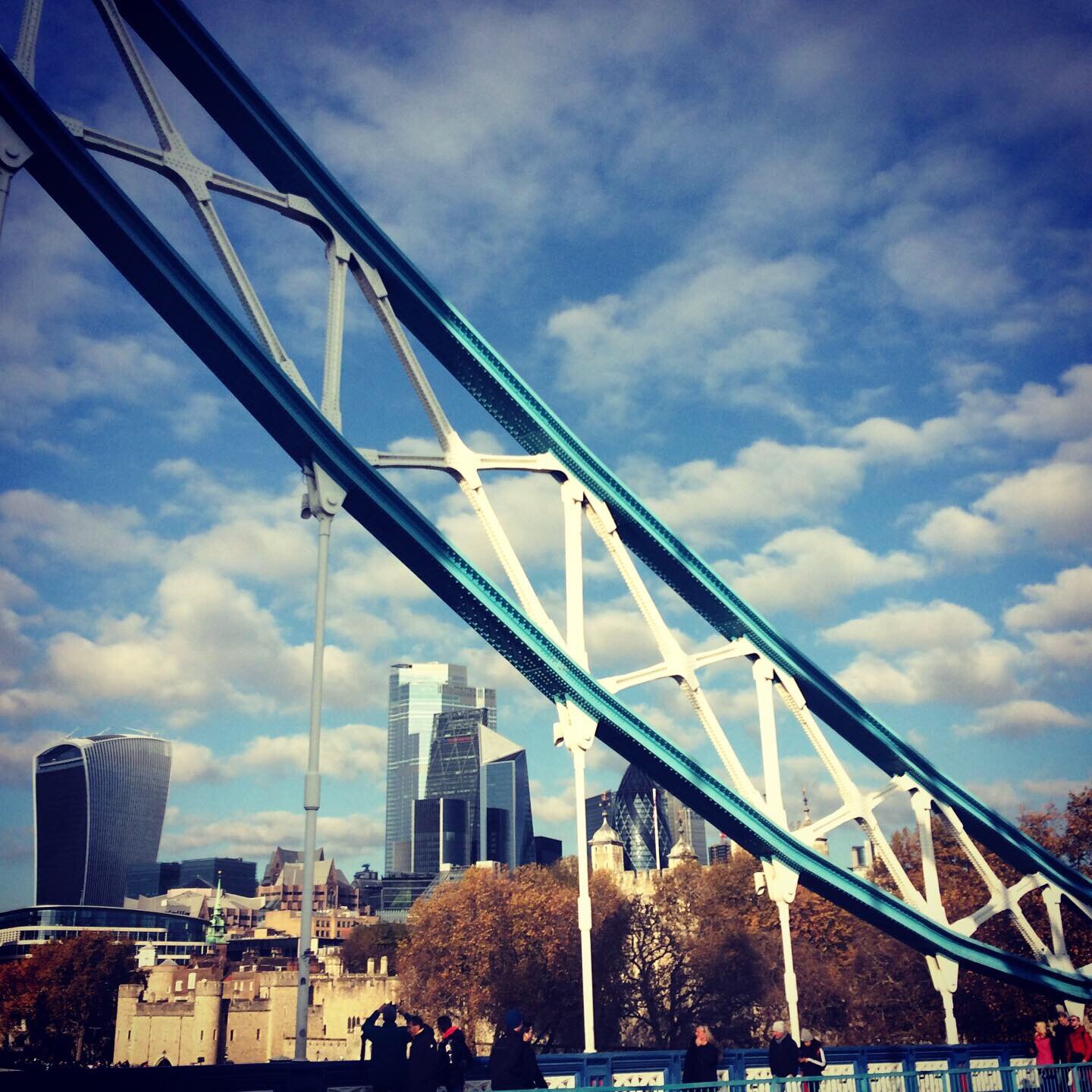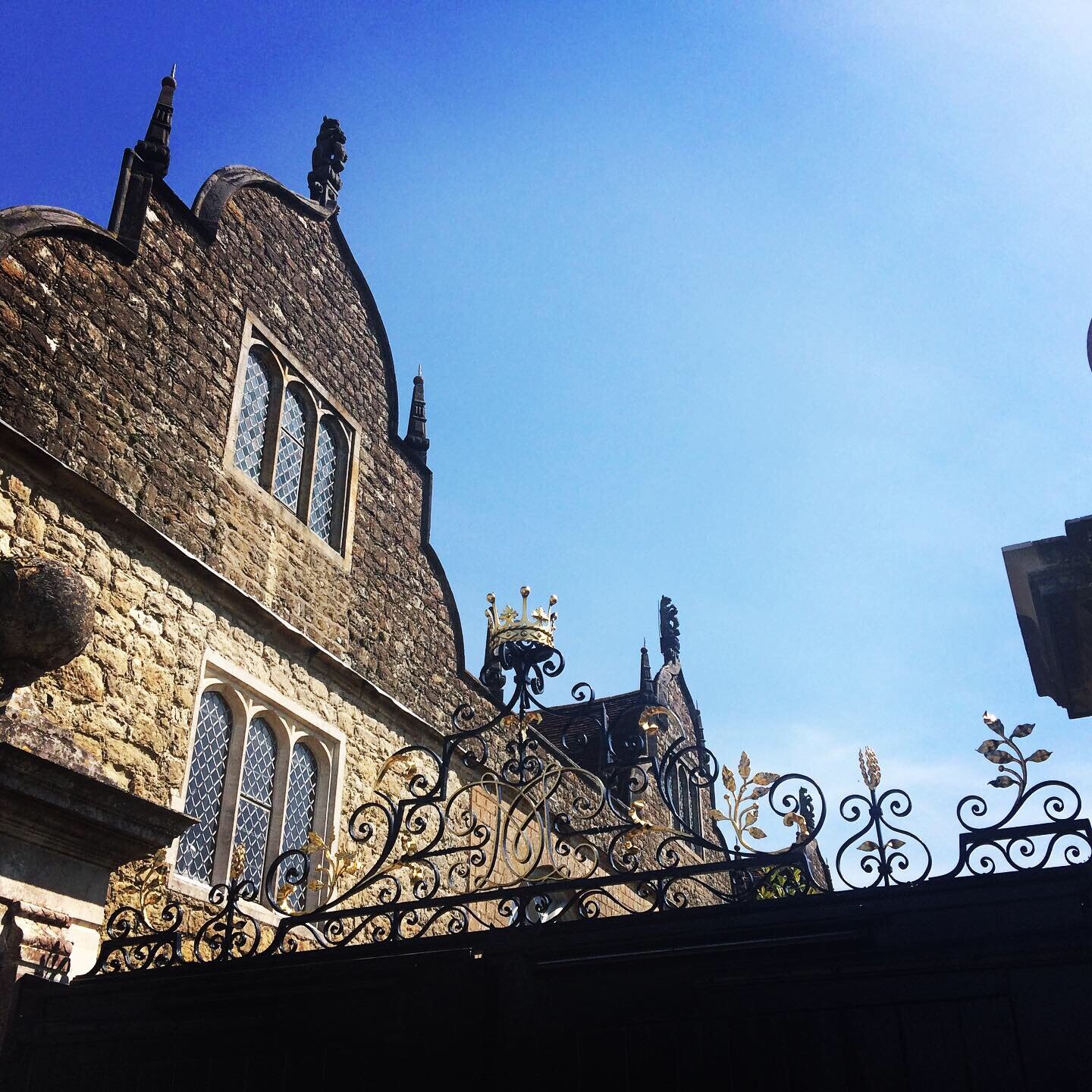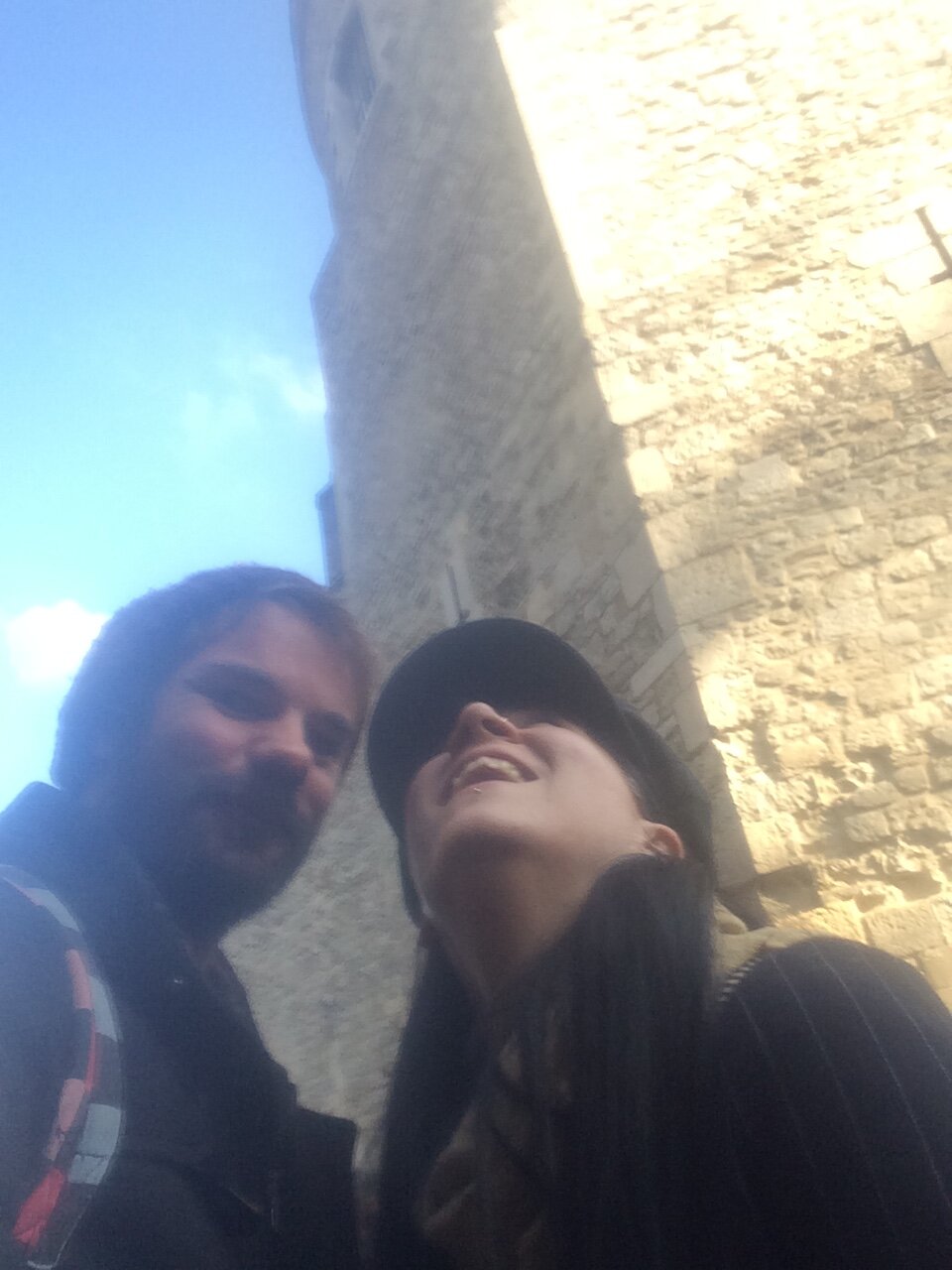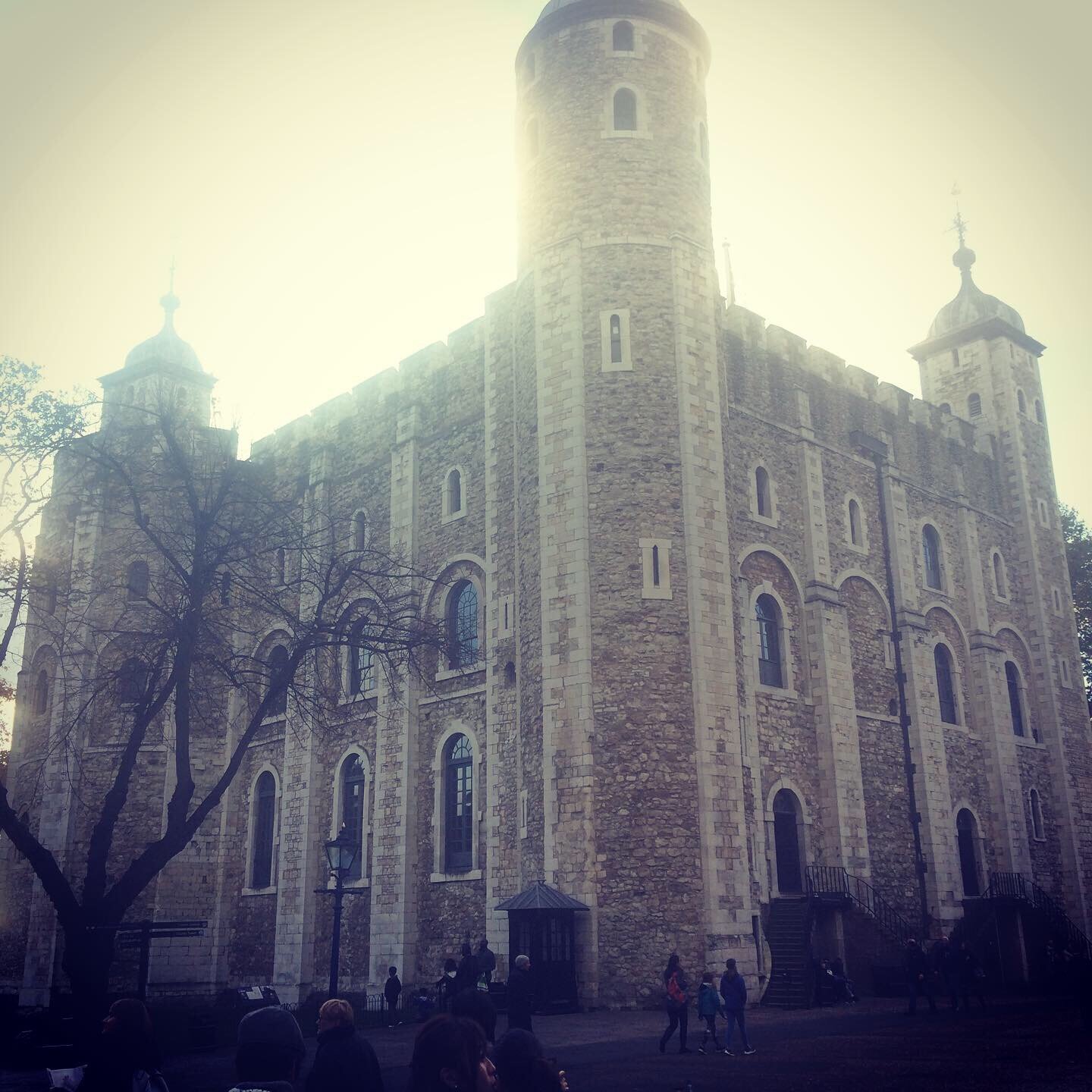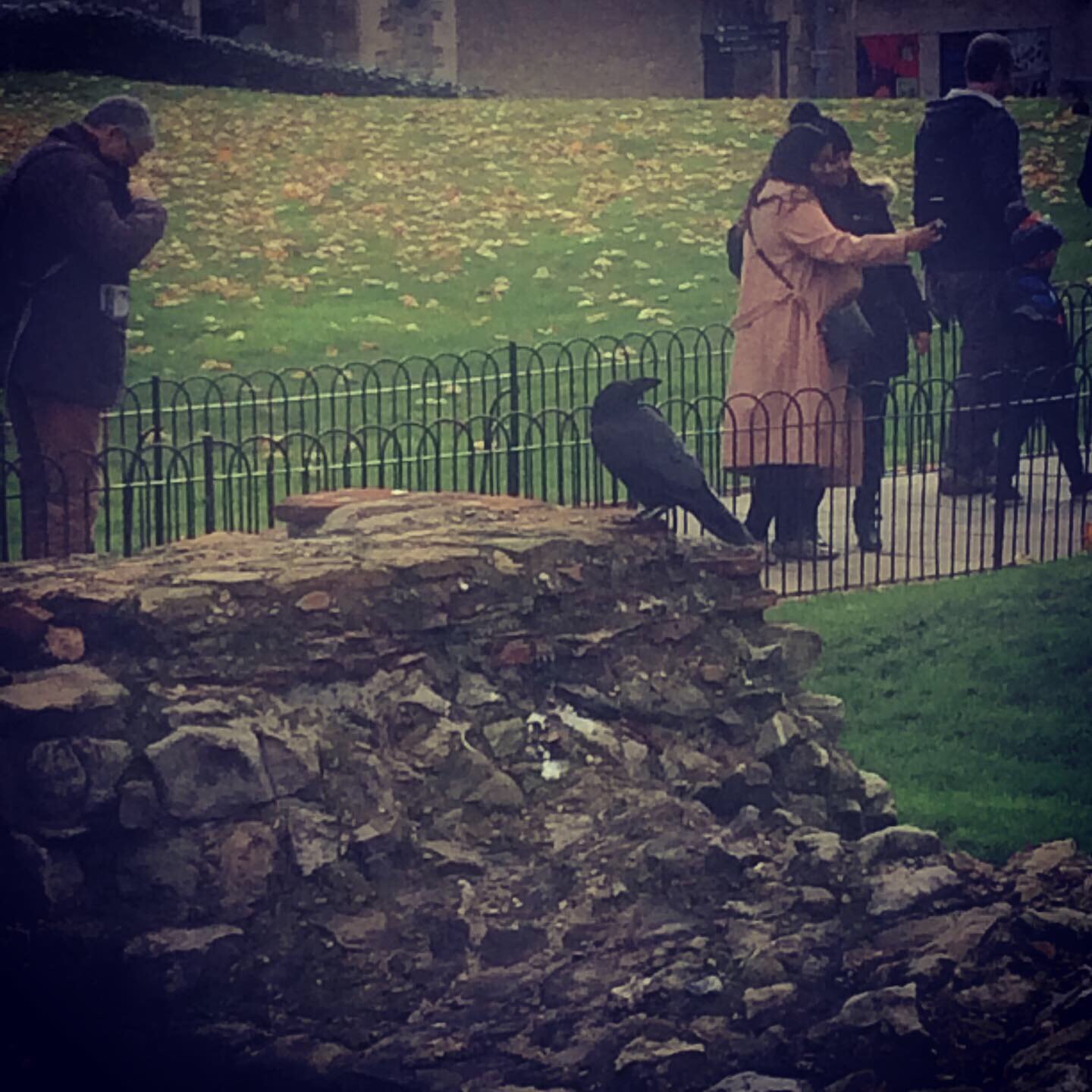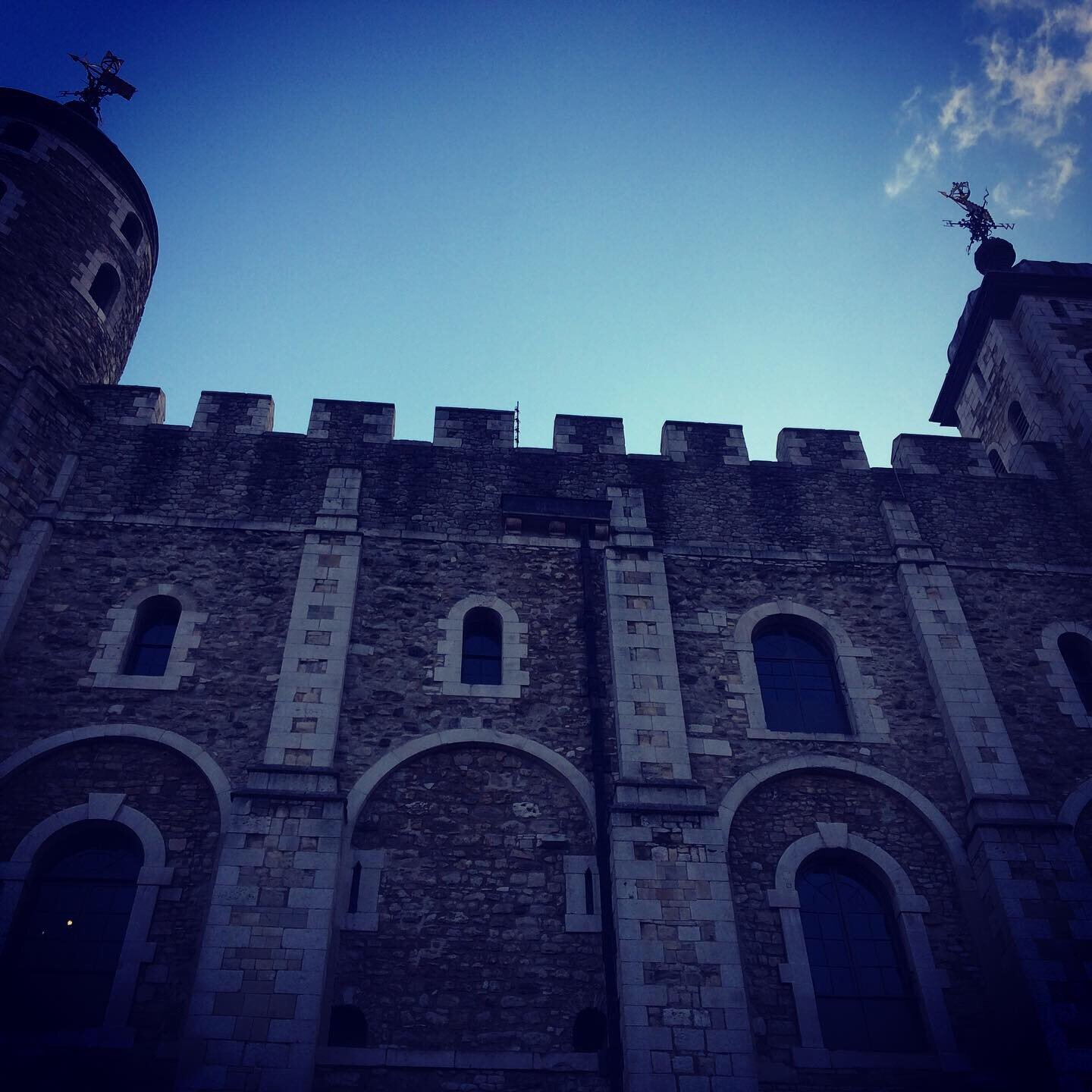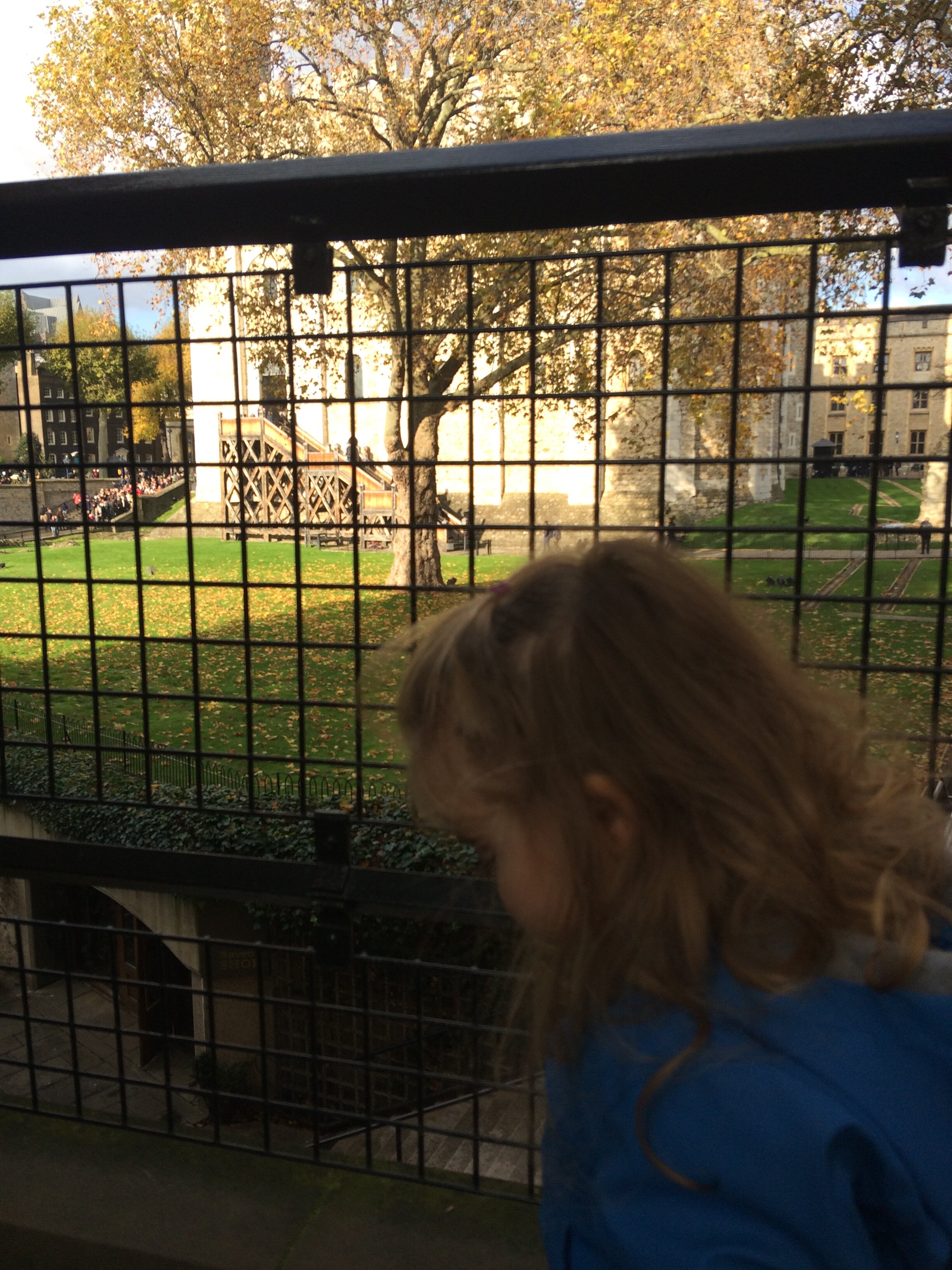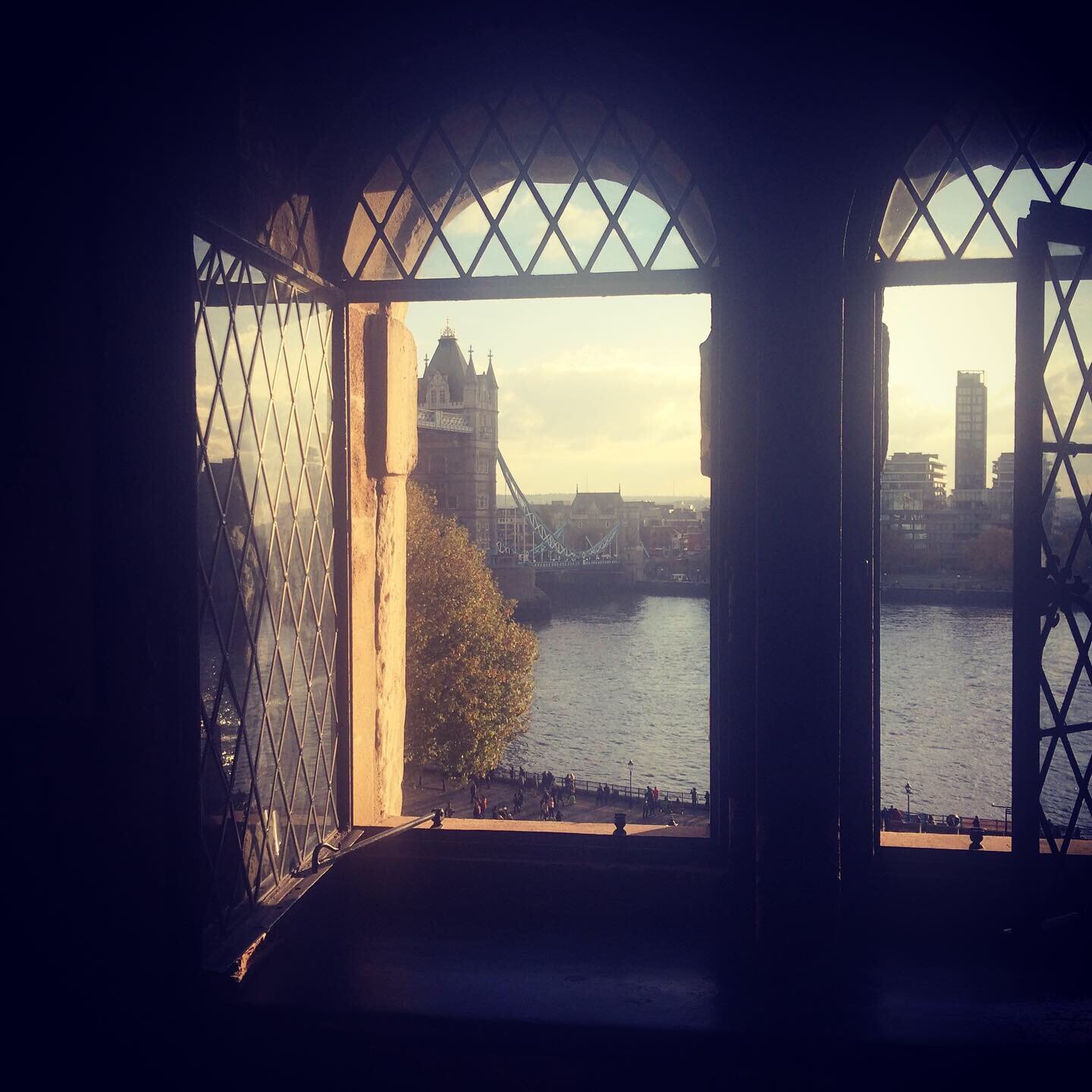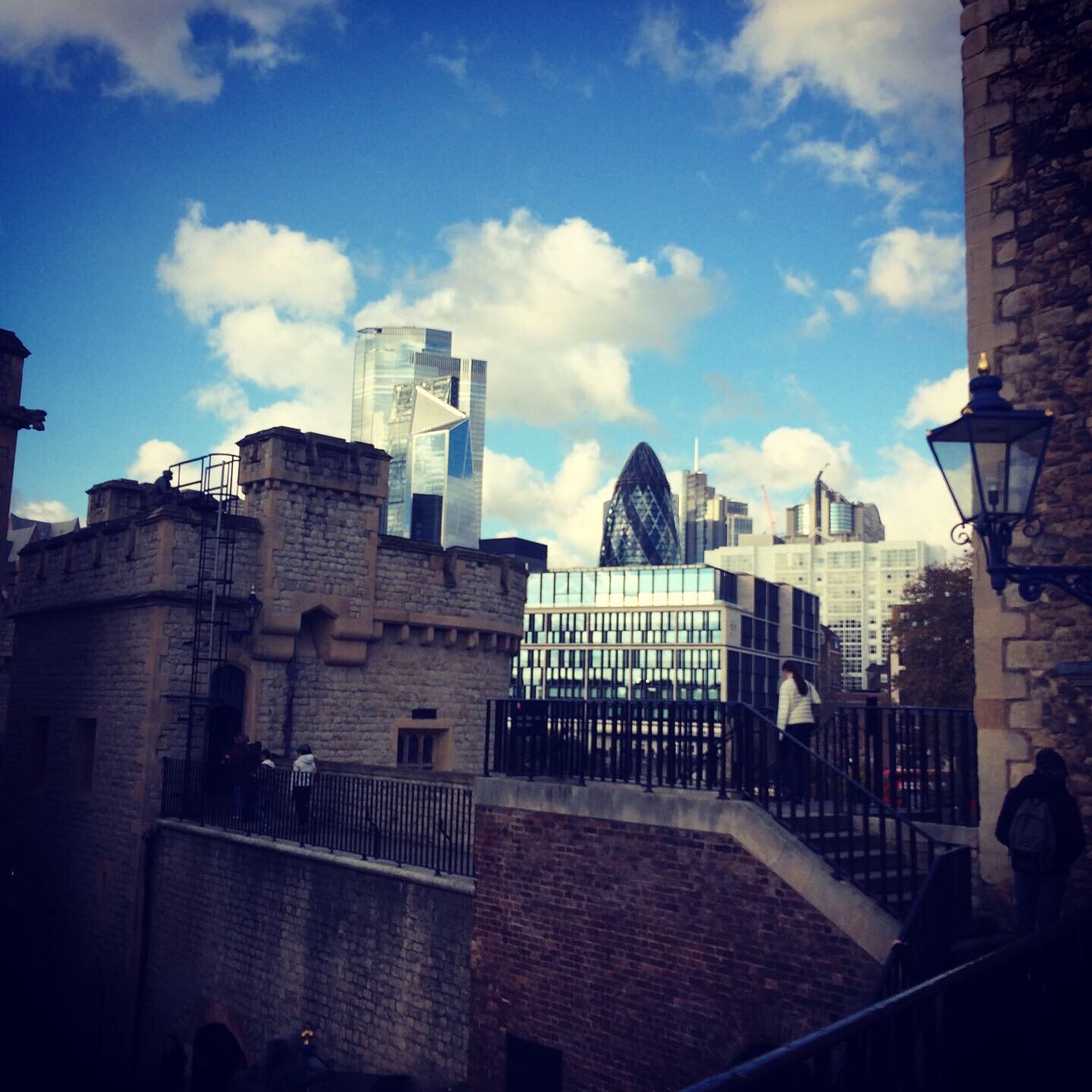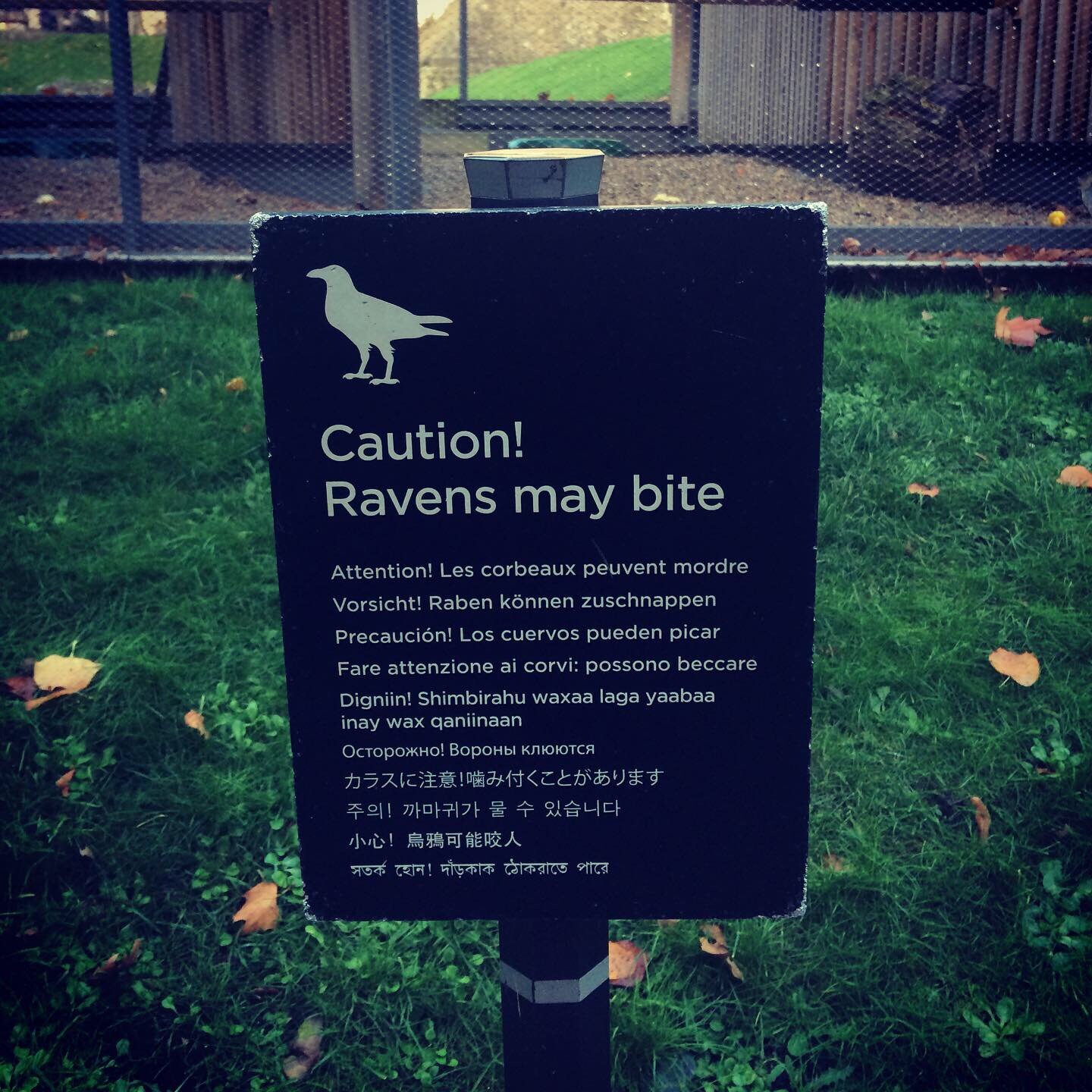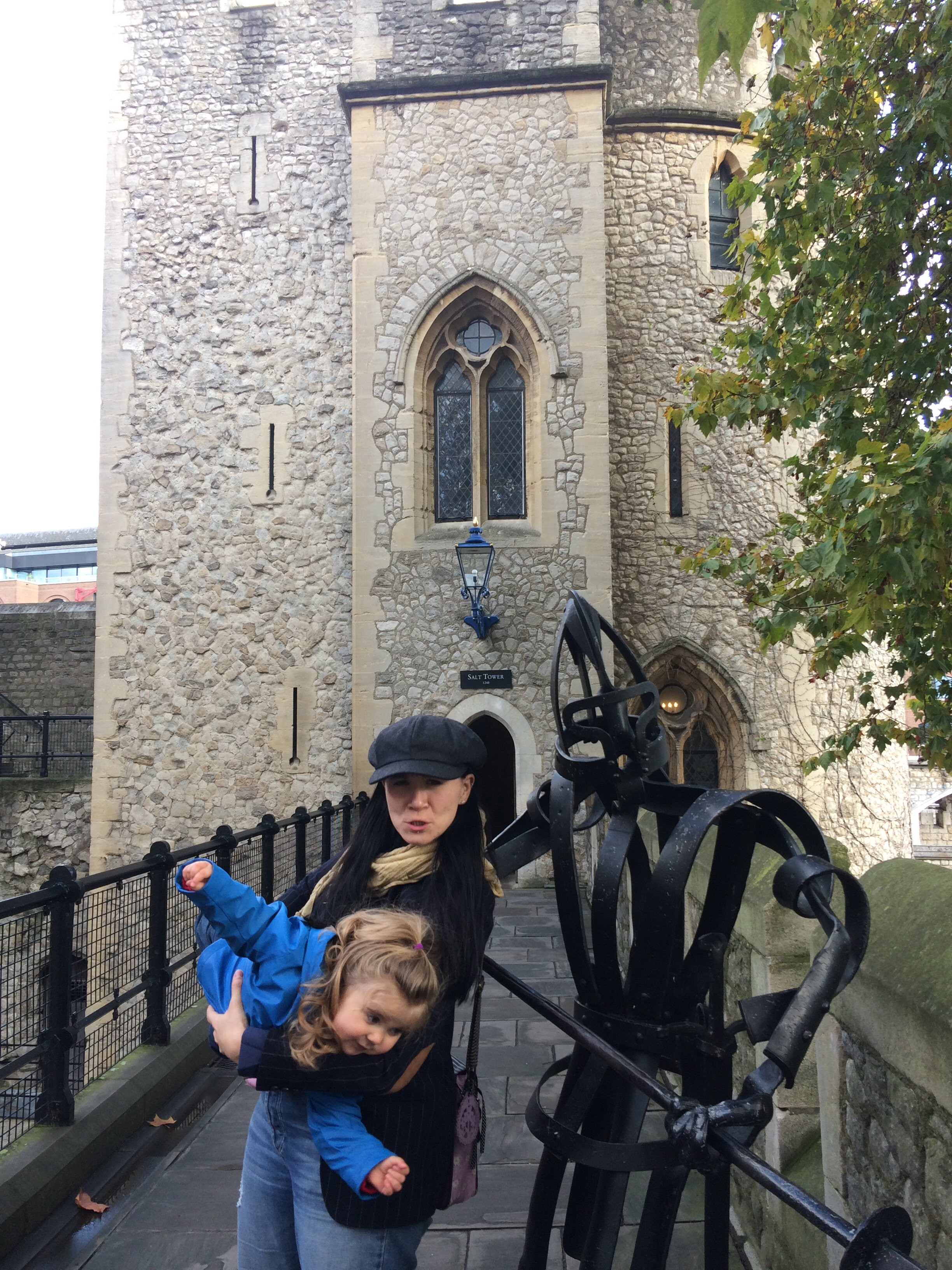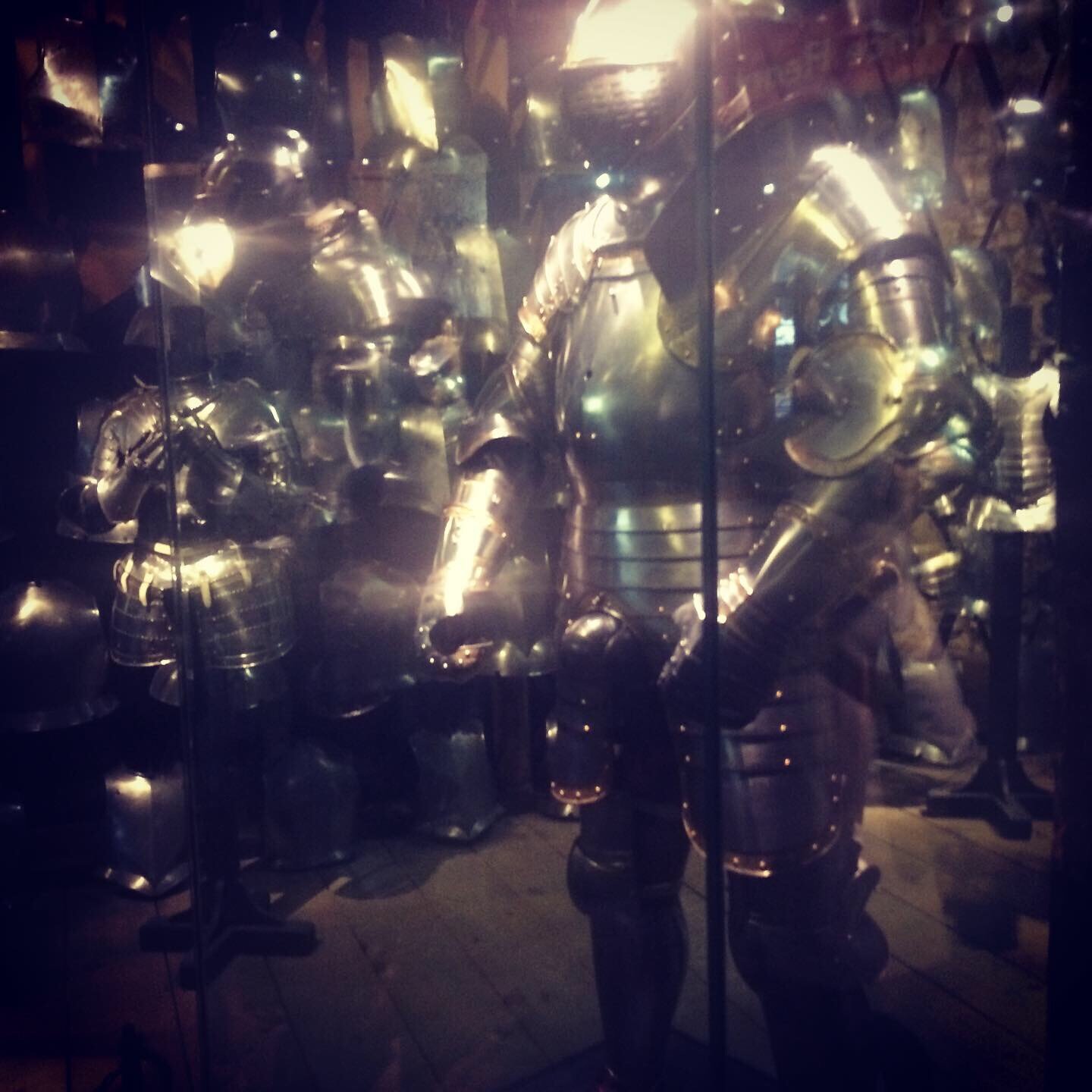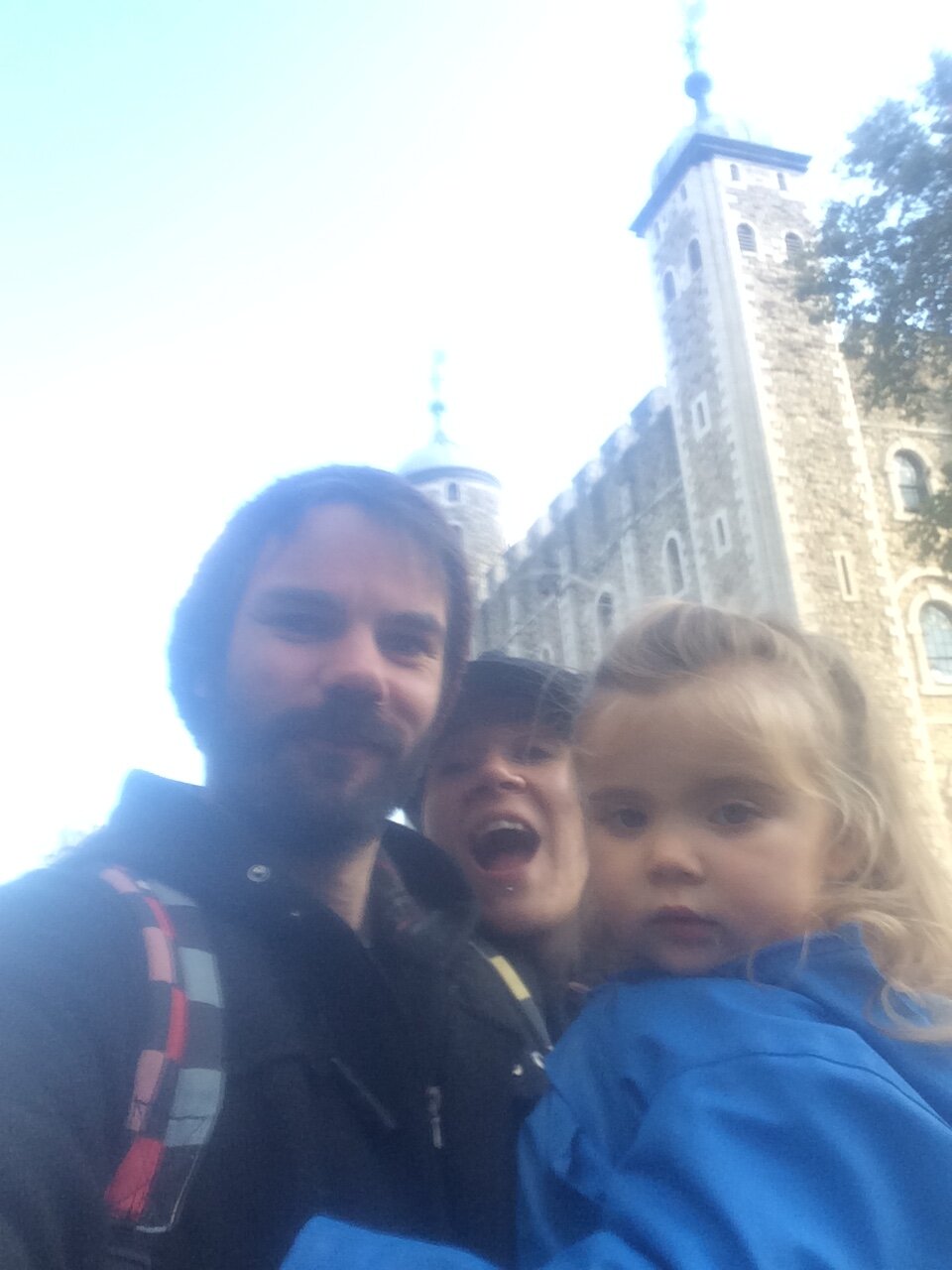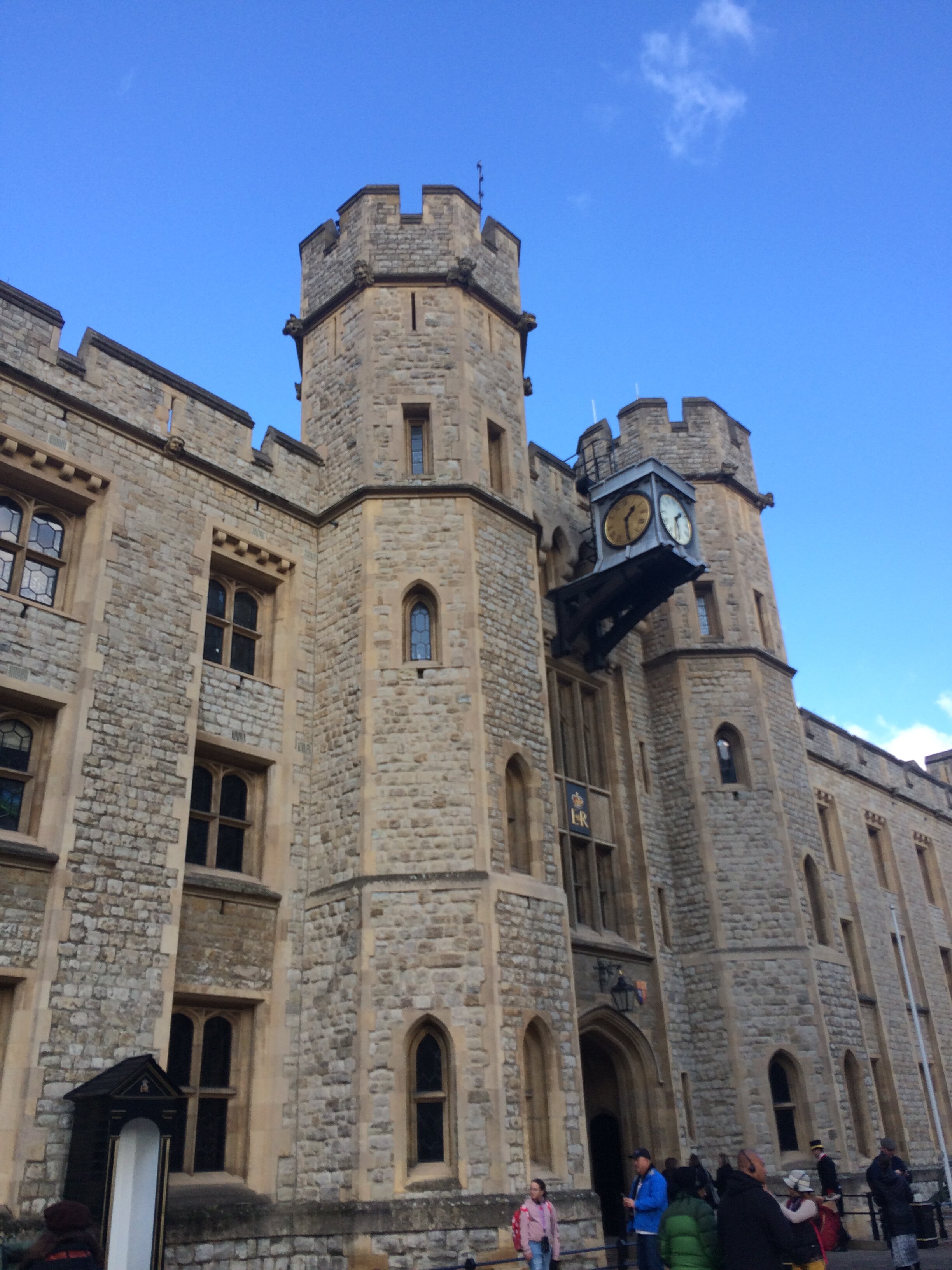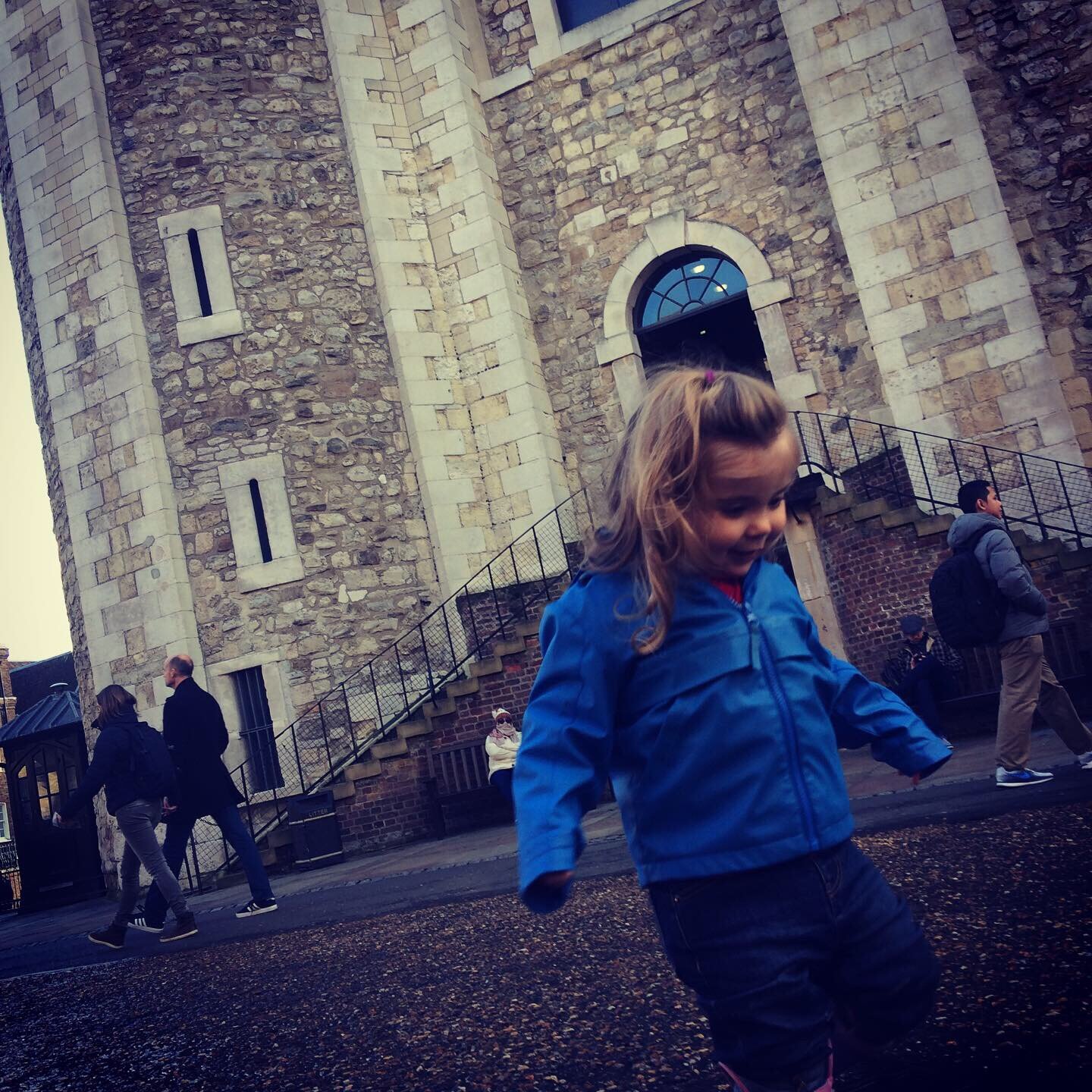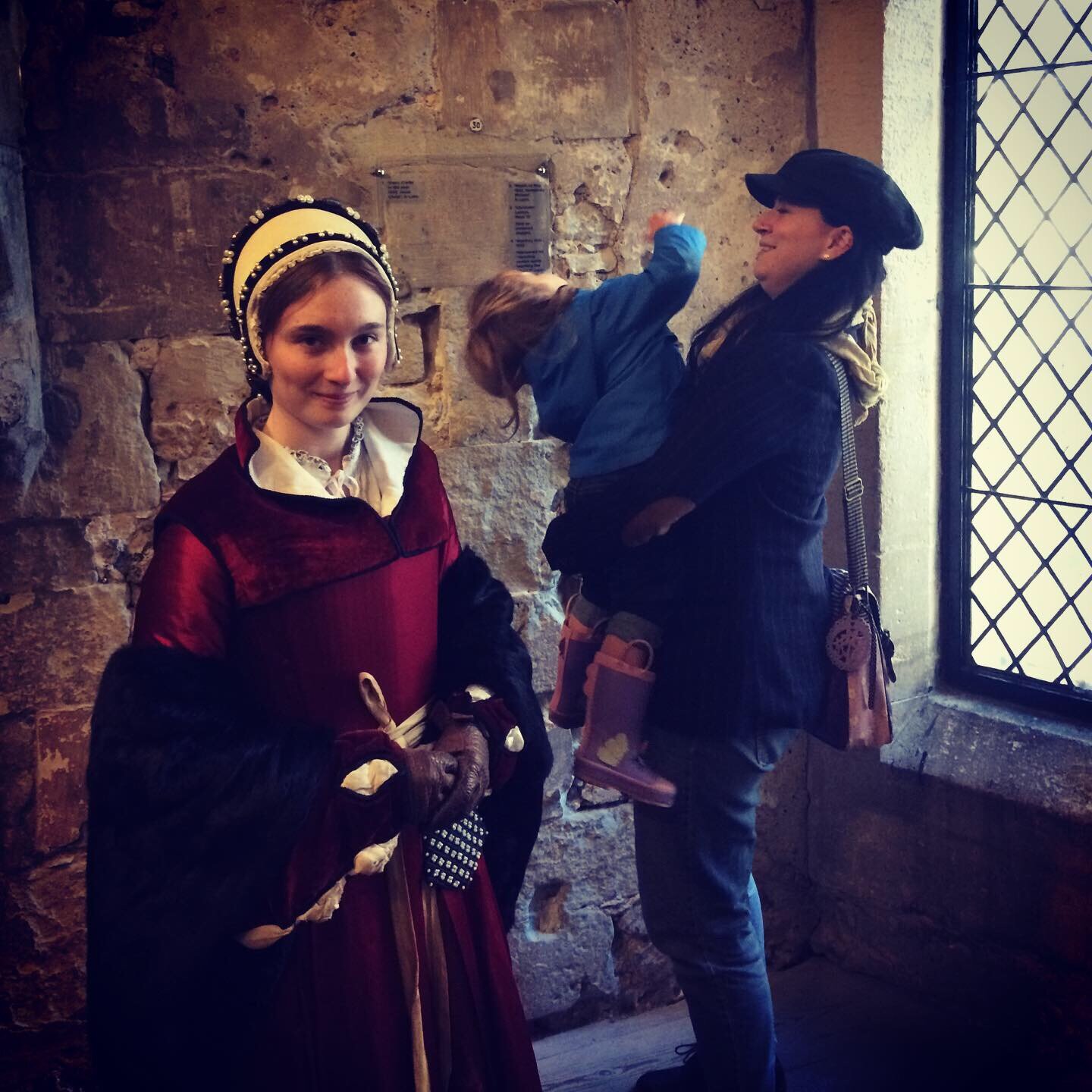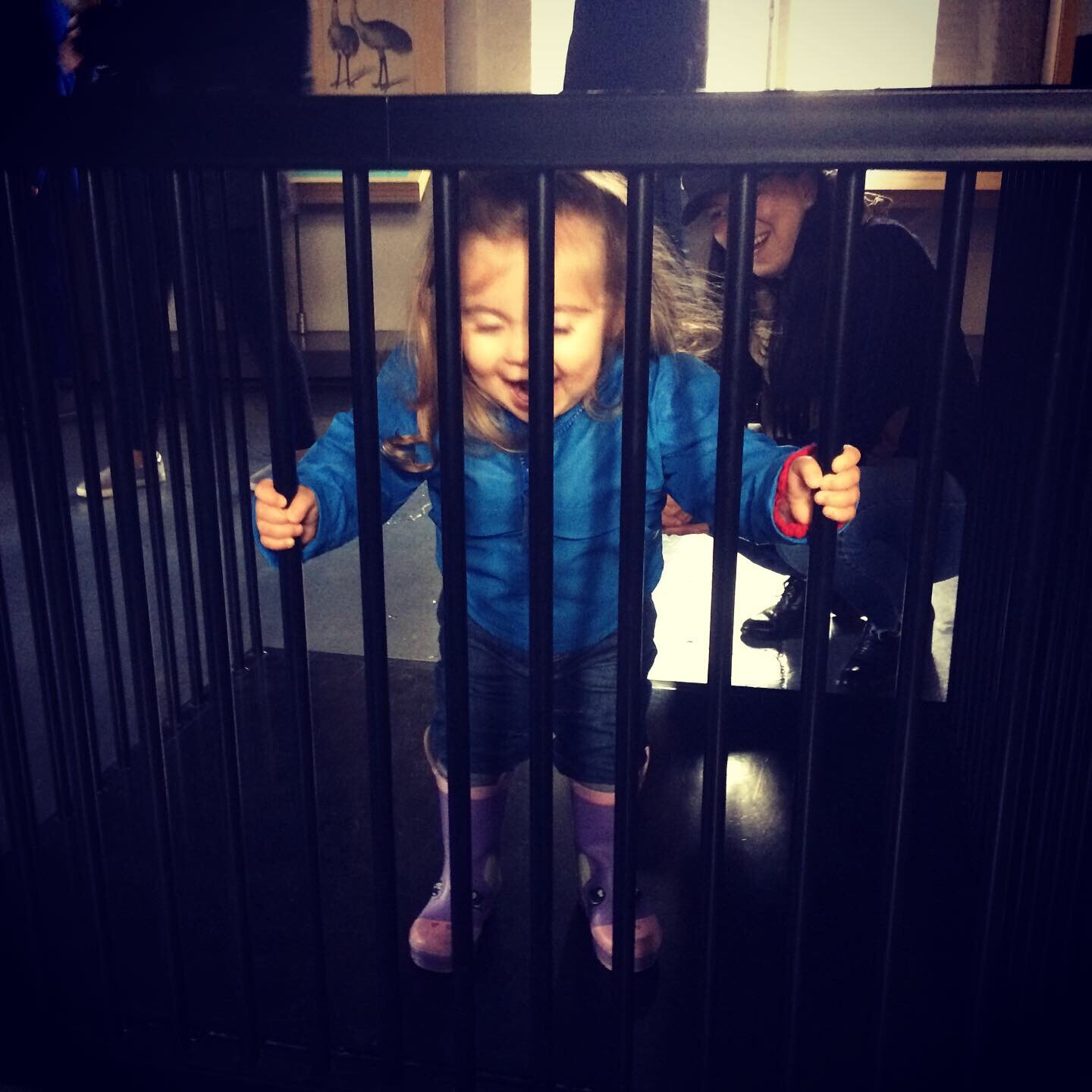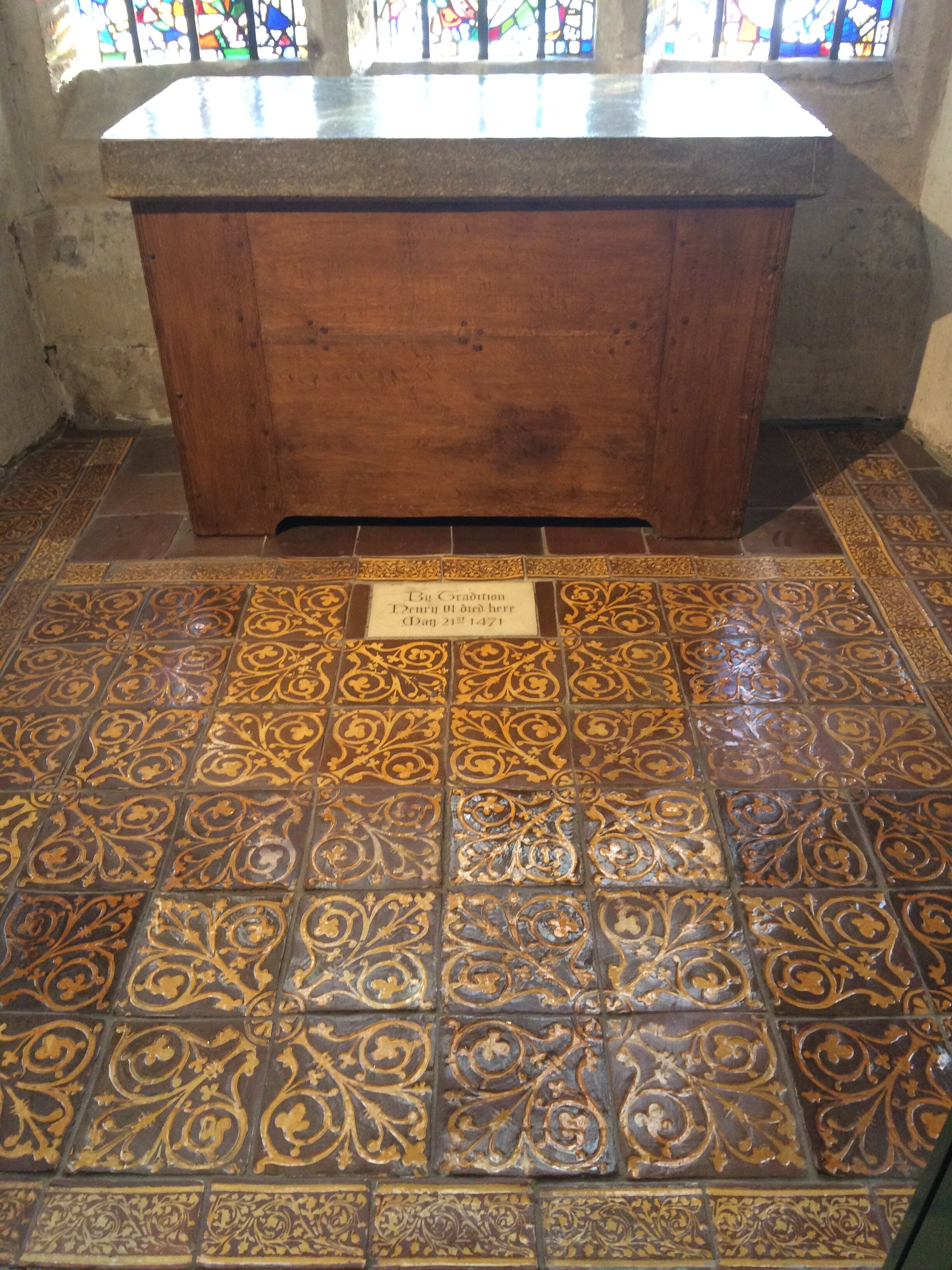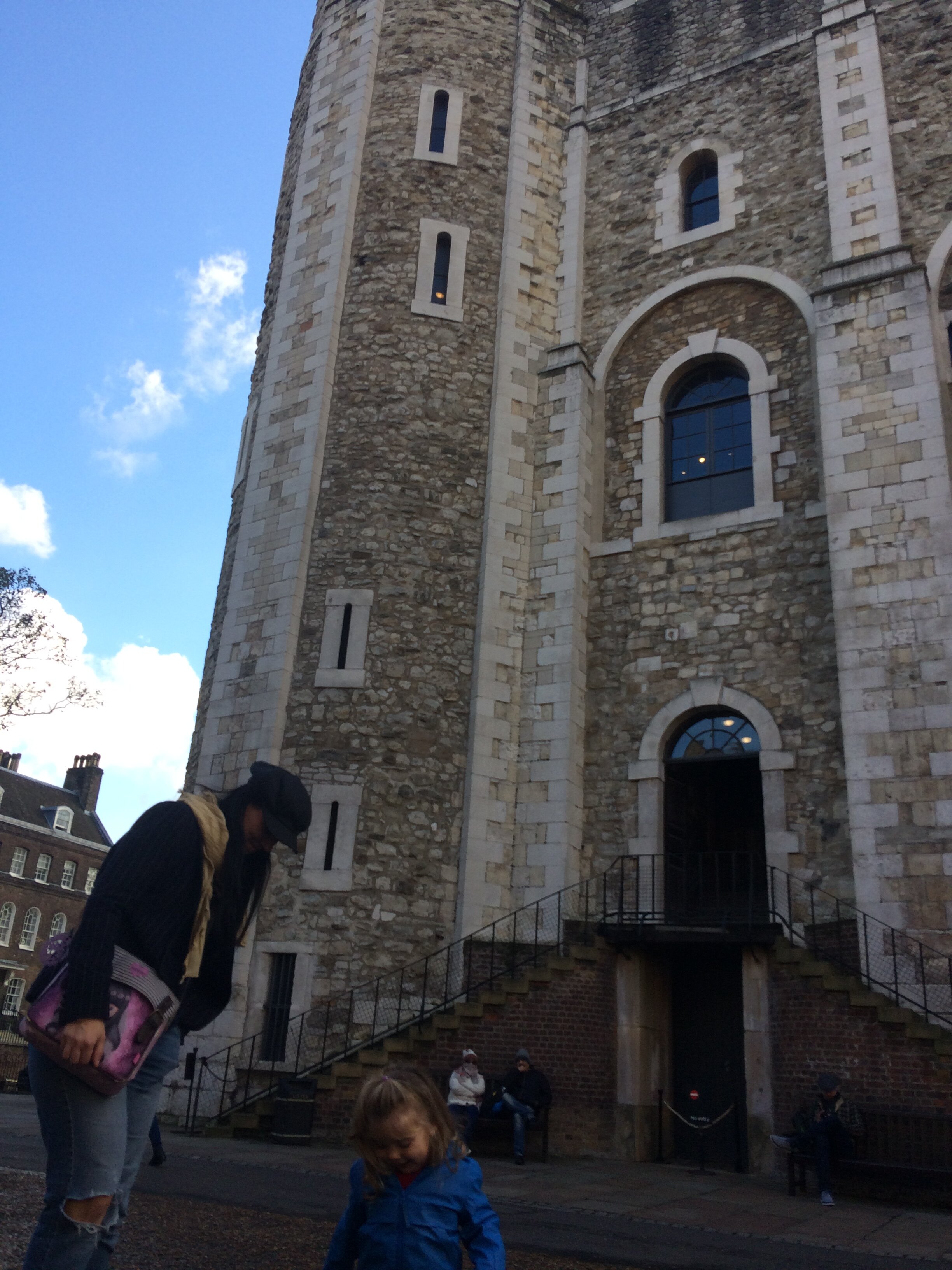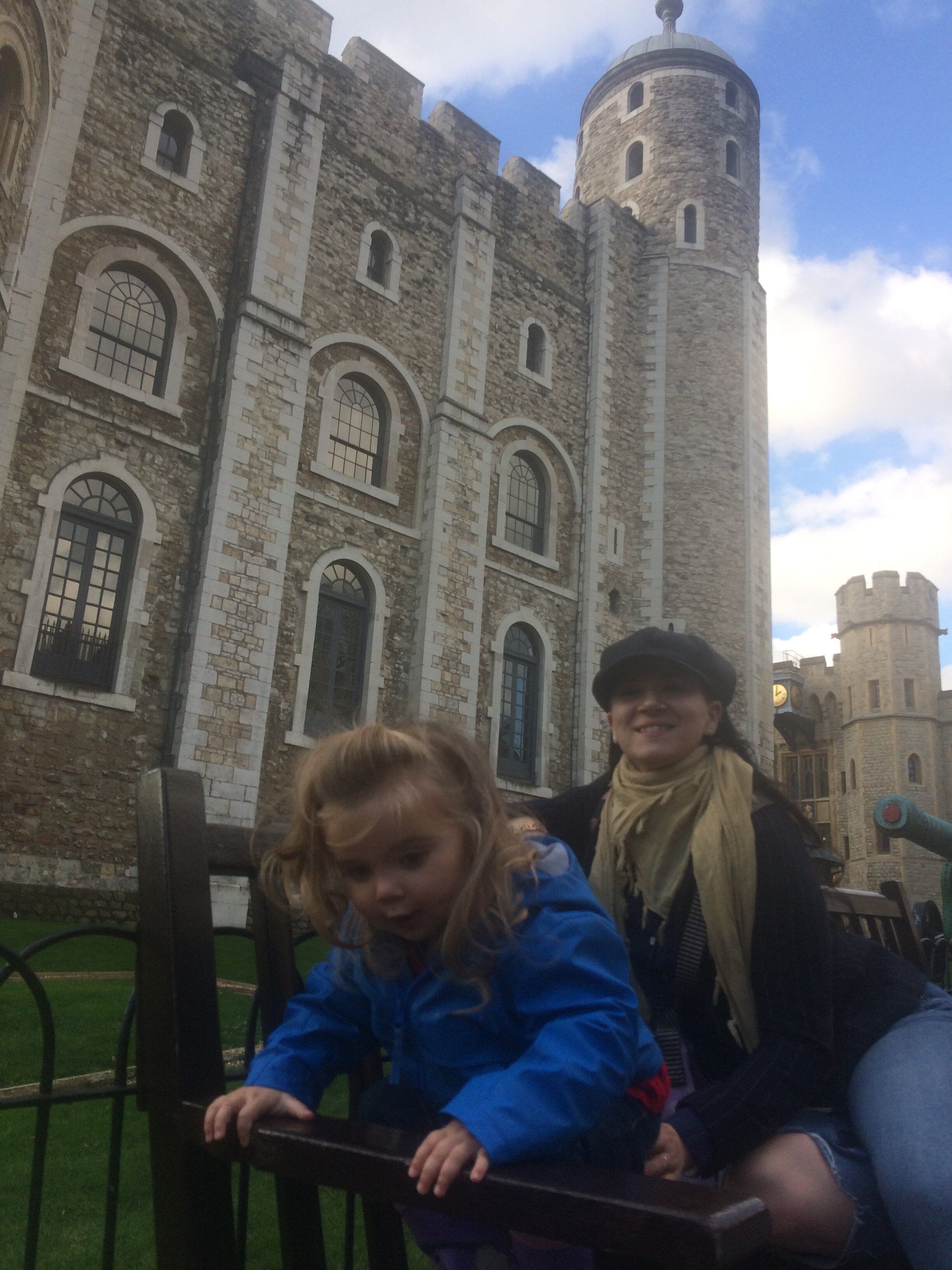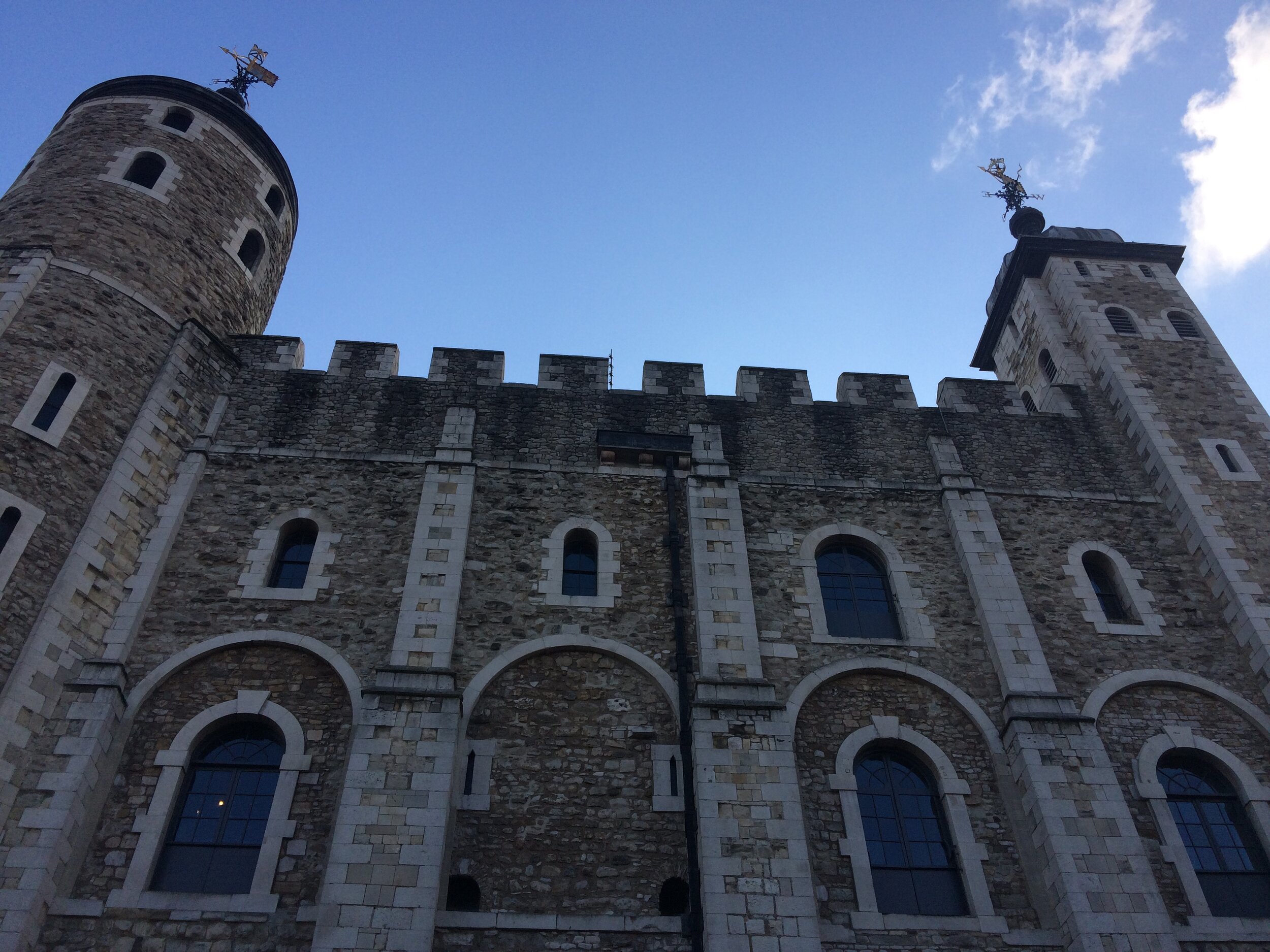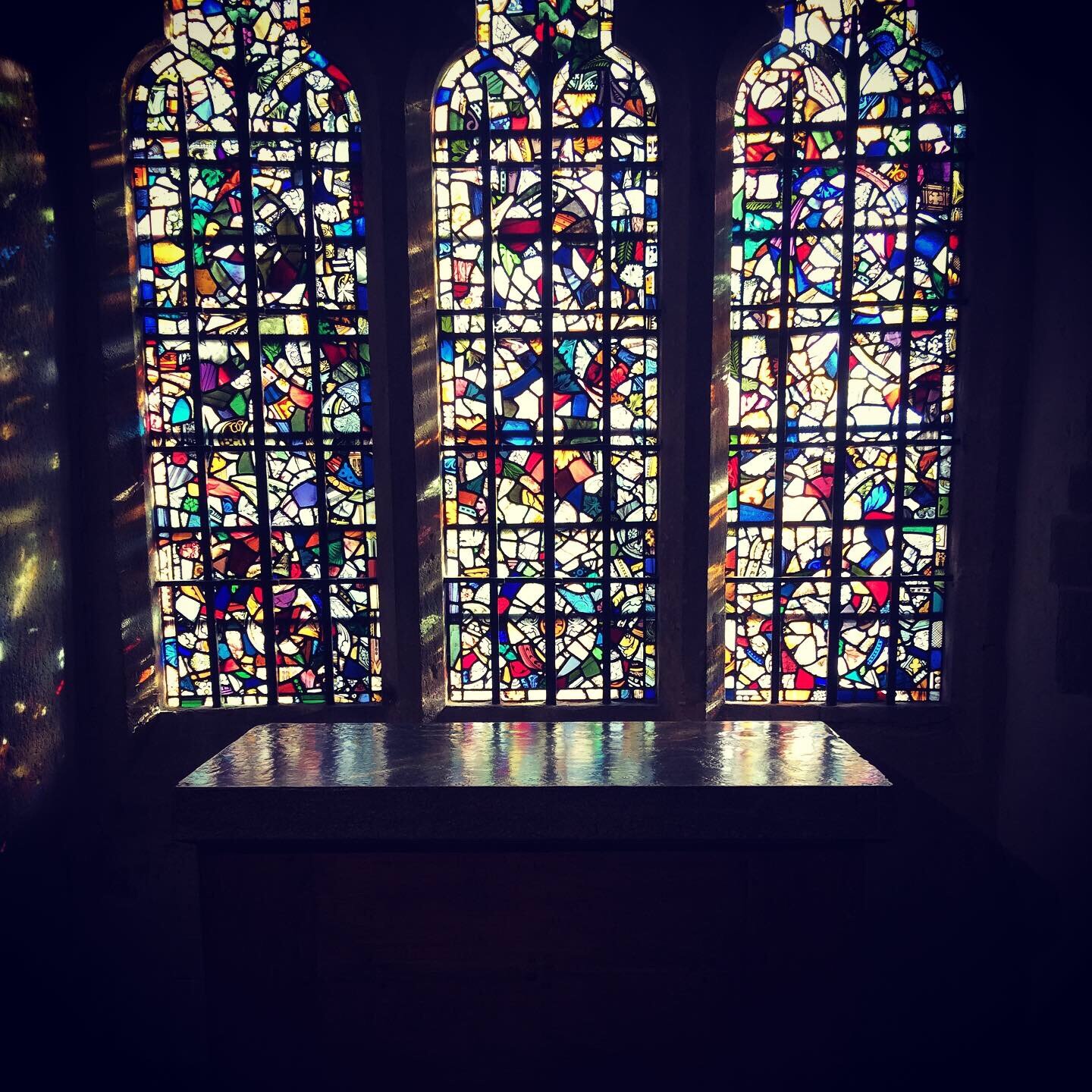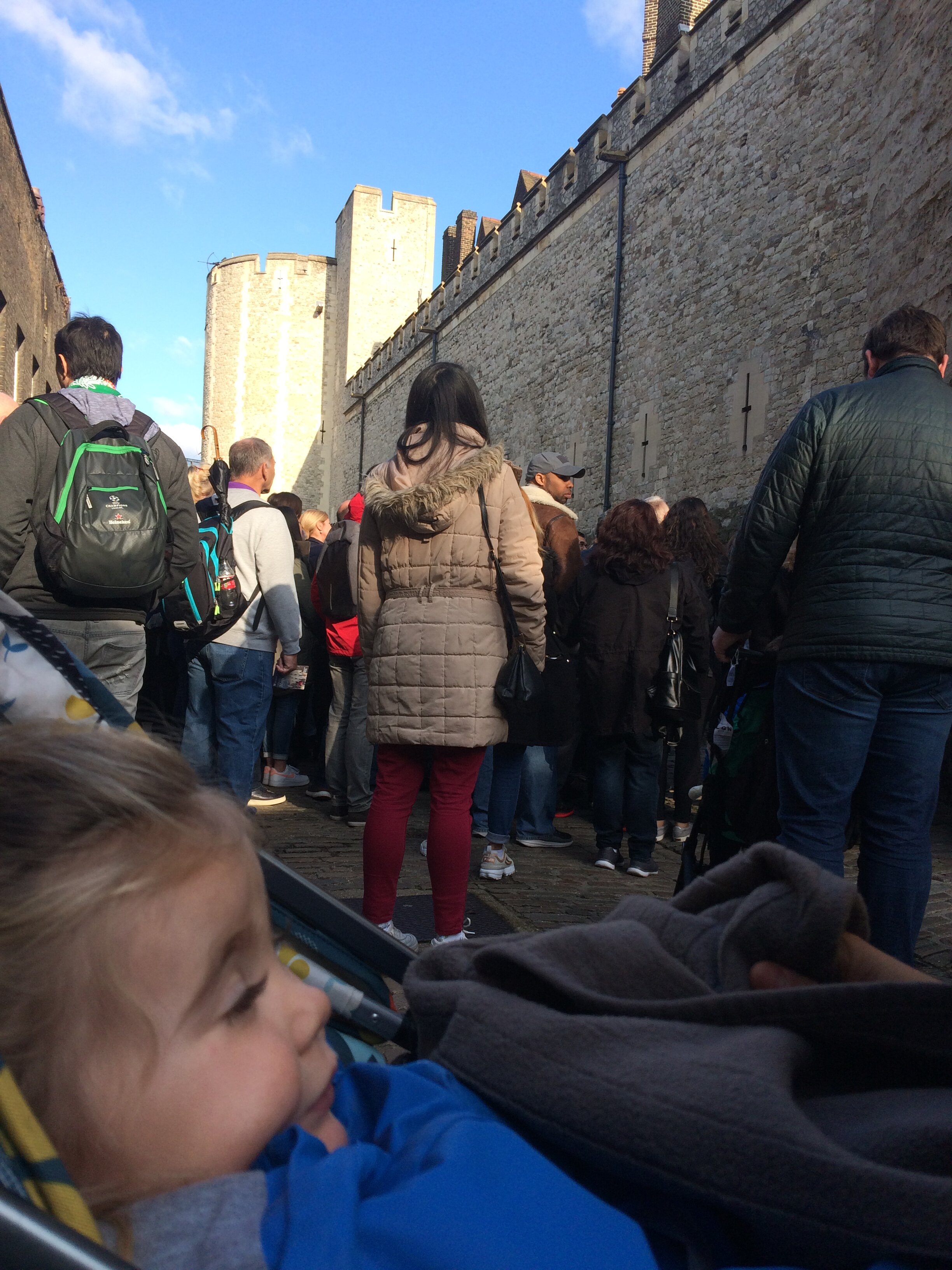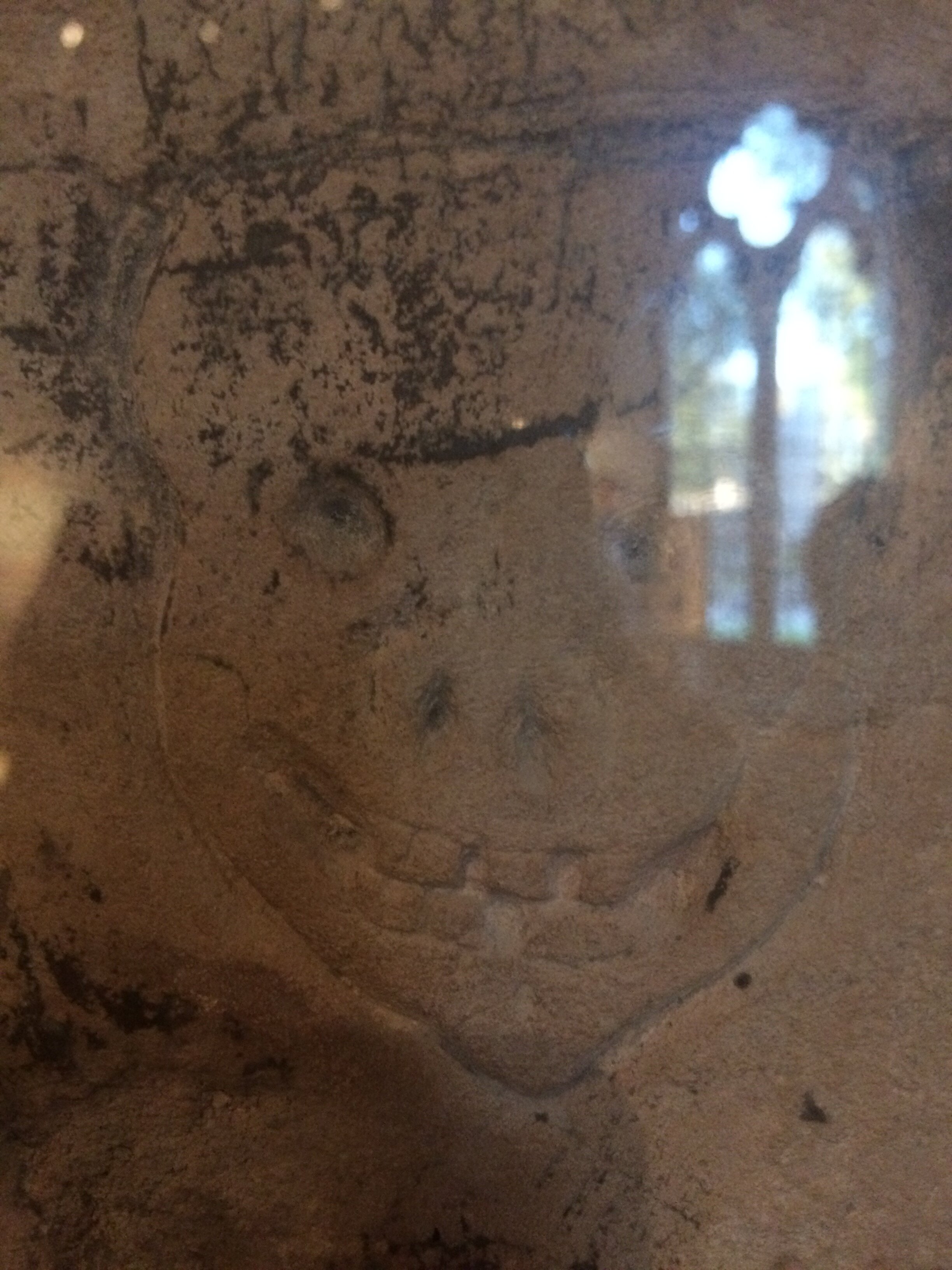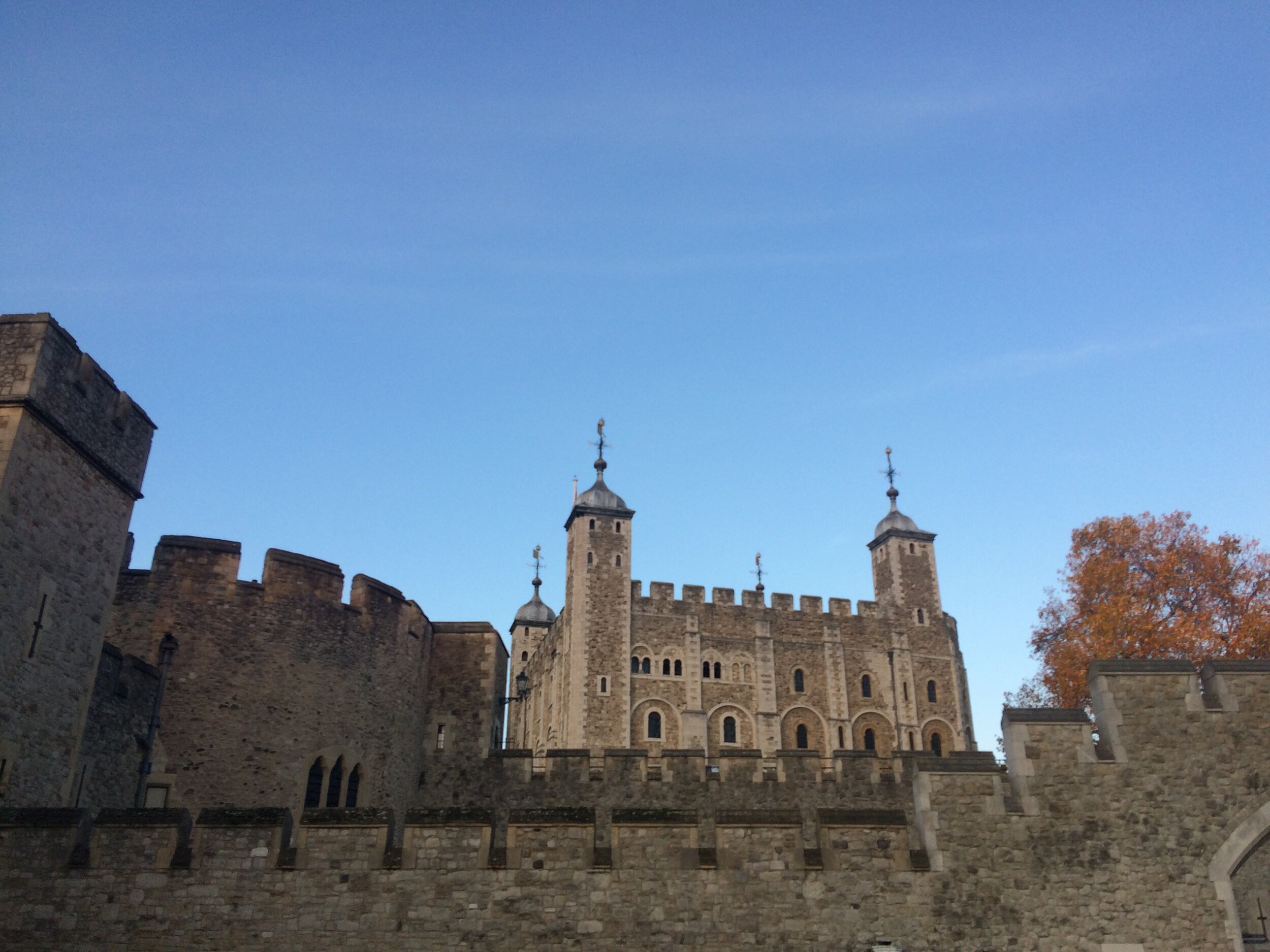Beneath delightful blue winter skies, seeking ancient historical mysteries, our merry little band entered through the gates of the most notorious building in all of Great Britain, The Tower of London.
It would be impossible to write a brief blog on the history of this incredible site. Built in the 11th century as a fortress by William the Conqueror, to establish his dominance over the island following invasion, the Tower and its surrounding structures have since been a royal residence, a prison, a mint, a stronghold and even a menagerie. Over 1000 years of turbulent tales are locked within its walls.
Emily organised our amazing visit as a wonderfully thoughtful gift, knowing that despite my years in the capital, I had yet to witness the famous fortress. My excitement was impossible to disguise from the moment of waking, right through until we consumed a final beer on the way home. The historian in me danced on clouds of delight, drunk on the abundance of chronicles connected to this Thameside treat.
There are countless blogs and websites dedicated to the intriguing tales connected to this little bit of land. Home to the Crown Jewells of Great Britain, it has produced stories of Kings and Queens, prisoners, tortures, punishments and executions; dark tales like that of the Princes in the Tower, mere children destined for the throne whose lives were cut short in the name of power; tales of Queens decapitated by ruthless Kings; tales of persecuted religious martyrs. The list is endless.
As we wandered through the various Tower buildings, each with its own unique heritage, it was clear the histories locked in these walls were too numerous to fully explore. We could have spent a day in each room. Reconstructed bed chambers, chapels, dungeons, throne rooms and armouries appeared with each new step. Trying to consume it all was difficult. The tours are highly recommended, and by the sound of it, as hilarious as they are educational!
Characters such as Elizabeth I, Sir Walter Raleigh, Guy Fawkes, even the infamous Kray brothers were prisoners here. Unsurprisingly, tales of haunting are plentiful; the ghost of Anne Boleyn is thought to roam Tower Green and a cousin of Queen Elizabeth who starved to death in the tower is said to remain in the Queen’s House, these are just some of the spectres stalking this ancient pile.
For our part, we were fascinated by stories from before the famous White Tower was erected. Much of our intrigue emerged from fanciful mythology surrounding this particular hill by the Thames. As it happens, there is tantalising evidence of life at this location prior to William the Conquerors immense building project, it is perhaps a little less well known, but equally as fascinating.
Geoffrey of Monmouth’s Historia Regum Britanniae told of Brutus, a Trojan descendant who having been banished from Italy began a journey across Europe. Amassing a number of Trojan exiles and winning many battles, Brutus was visited in a dream by the goddess Diana who prophesied he would discover an island occupied by Giants and create a New Troy.
According to Monmouth, the island would take his name, from Brutus to Brittania. Brutus discovered Albion around 1170BC and ridding it of Giants became the first in a line of great kings. He searched the island for a suitable home and coming upon the Thames he chose a site, naming it Troia Nova (New Troy). The Welsh name for tower hill was the Bryn Gwyn, roughly translated as the white hill. It is here in this apparently sacred mound, that Brutus of Troy is said to be buried.
In a collection of Welsh folk tales called Mabinogion, is the story of the Giant Bendigeidfran, or Bran the Blessed, King of England. Bran led an invasion of Ireland, wading across the sea and laying over the islands as a bridge so his men could cross. He was fatally injured by a poisoned spear during the battle. On his death bed, he ordered his followers to decapitate him, and take my head and carry it to the Gwynfryn (White Hill) in London and bury it with its face towards France. Gwnfryn has been identified by some commentators with Tower Hill. The buried head is believed to have kept the island safe from invasion until none other than King Arthur himself ordered it to be exhumed, claiming no other force than himself was required to defend the island.
The custom of keeping severed heads has been recognised in Celtic cultures. They are thought to have believed the head housed the soul and so they would keep the heads of their enemies. The word Bran in Welsh means crow, and so the legend has attached itself to the presence of ravens at the Tower of London. Charles II was informed of a prophecy that if the ravens left the tower, the white tower would collapse and a terrible fate would befall the nation.
Flint flakes and deposits of worn pottery were discovered beneath accumulated layers of sand and gravel during excavations in the south-east corner of the inmost ward in 1955 and 1976. Towards the end of the prehistoric period, the river level declined, leaving a dry area. Here excavations revealed flint flakes and Iron Age pottery along with a shallow grave containing a skeleton of a young male, 13 – 16 years old. Radiocarbon dating of the skeleton revealed that it dates to no earlier than the beginning of the first century AD. The style and ritual of the burial suggest that the male died just before the Roman invasion of AD43. Pits and pottery of Iron Age date have been uncovered from sites around the Tower.
Much of the archaeology in this area has traditionally been focused on the Roman wall and was the result of refurbishment in buildings in the surrounding area between the 1930s and the present day. Sites produced a wealth of artefacts such as building material, sword scabbards, flints, Roman pottery sherds and even a sandstone sarcophagus with the skeleton of a child dated to the 4th century. The evidence led to the hypothesis a cemetery was in use during the 3rd and 4th centuries, just outside the city walls. In 1899, part of a structure which included a channelled hypocaust system was found some 16 feet south-west of the White Tower.
As our legs tired and our minds were full of wonders, it was time to escape the Tower and head for home. Not before a nice drink by the Thames of course, to look out over the river and try to arrange the mass of historical stories we had witnessed. The Tower has a gruesome and terrifying past, but it has remained at the centre of importance on our little island at the edge of the earth for as long as there has been a London. It was a true pleasure to experience it in an age where the majority get to walk out alive!


